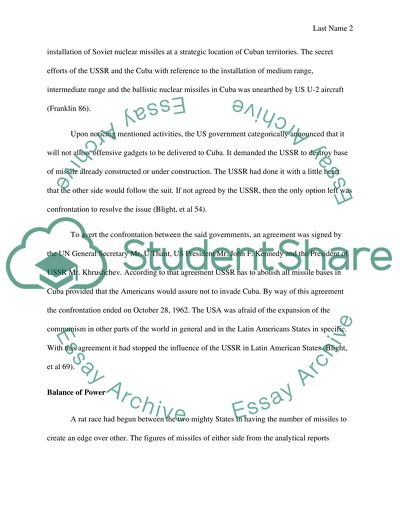Cite this document
(“Historical investigation - To what extent was the Cuban Missile Crisis Essay”, n.d.)
Historical investigation - To what extent was the Cuban Missile Crisis Essay. Retrieved from https://studentshare.org/history/1612882-historical-investigation-to-what-extent-was-the-cuban-missile-crisis-the-result-of-us-policy-towards-the-cuban-revolution
Historical investigation - To what extent was the Cuban Missile Crisis Essay. Retrieved from https://studentshare.org/history/1612882-historical-investigation-to-what-extent-was-the-cuban-missile-crisis-the-result-of-us-policy-towards-the-cuban-revolution
(Historical Investigation - To What Extent Was the Cuban Missile Crisis Essay)
Historical Investigation - To What Extent Was the Cuban Missile Crisis Essay. https://studentshare.org/history/1612882-historical-investigation-to-what-extent-was-the-cuban-missile-crisis-the-result-of-us-policy-towards-the-cuban-revolution.
Historical Investigation - To What Extent Was the Cuban Missile Crisis Essay. https://studentshare.org/history/1612882-historical-investigation-to-what-extent-was-the-cuban-missile-crisis-the-result-of-us-policy-towards-the-cuban-revolution.
“Historical Investigation - To What Extent Was the Cuban Missile Crisis Essay”, n.d. https://studentshare.org/history/1612882-historical-investigation-to-what-extent-was-the-cuban-missile-crisis-the-result-of-us-policy-towards-the-cuban-revolution.


